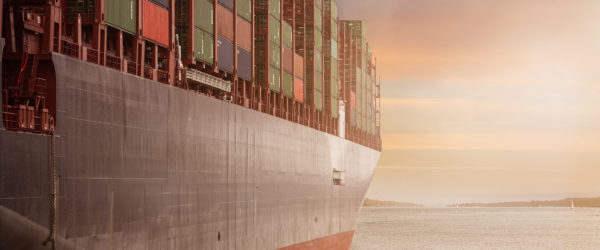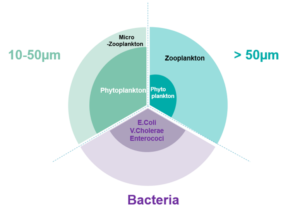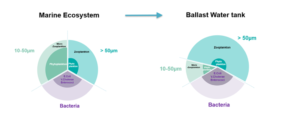Ballast water monitoring is vital to preventing the spread of invasive species
With more than 4,000 different organisms found in a ship’s ballast water tank, it’s no surprise why ballast water monitoring is vital to preventing the spread of these invasive species, and why the International Maritime Organization (IMO) requires that all sizes of ballast organisms are monitored.
Known as the three fractions, these organisms are broken down into:
- bacteria,
- organisms of between 10-50µm, typically phytoplankton and some micro-zooplankton, and
- organisms greater than 50µm, mostly zooplankton as well as phytoplankton.
Why does testing of the three fractions matter?
There are a number of reasons why testing the three fractions of organisms is required by the Ballast Water Management Convention:
- people who have extensive practical experience with ballast water analysis all agree that if a ballast water treatment system fails it is most likely in the >50 size category.
- while it is well known that bacteria and phytoplankton are relatively easy to treat, zooplankton in the 50µm range has proven to be more difficult and should be carefully checked when monitoring to verify compliance or ballast water treatment system performance.
- phytoplankton and bacteria presence in ballast water is usually seasonal. There is no phytoplankton and no bacteria (most of the time none of the three indicator microbes) at the uptake in many places in the world or depending on the season (eg. in NORTH EUROPE in the winter).
- blooms of zooplankton can clog up the filters and/or pose significant treatment challenges.
The ecosystem in a ballast tank frequently changes between ports, with the >50µm fraction potentially increasing and the 10-50µm fraction potentially decreasing. The reason is that when the tanks are dirty, the zooplankton can survive in the sediments without light while the phytoplankton dies or are eaten. Also, bacteria can survive in biofilm and sediments.
Ballast Water Management Systems (BWMS) type approval testing and practical experience have shown that zooplankton is the most difficult fraction to treat in order to achieve compliance with D2 discharge requirements.
Monitoring of all three fractions is a key requirement under IMO regulation D2 of the Ballast Water Management Convention and Circ.42/Rev1, which provides guidance on ballast water sampling and monitoring. There should be greater emphasis on detecting organisms greater than 50µm, otherwise, detection of incompliant systems will be reduced, resulting in an increase in the spread of invasive aquatic species and all its consequences.
LuminUltra’s B-QUA test kit can provide measurement readings for all fractions in under 40 minutes. It is the only system capable of addressing all D2 organism size groups. Get in touch for more information on LuminUltra’s Ballast Water Solution.











